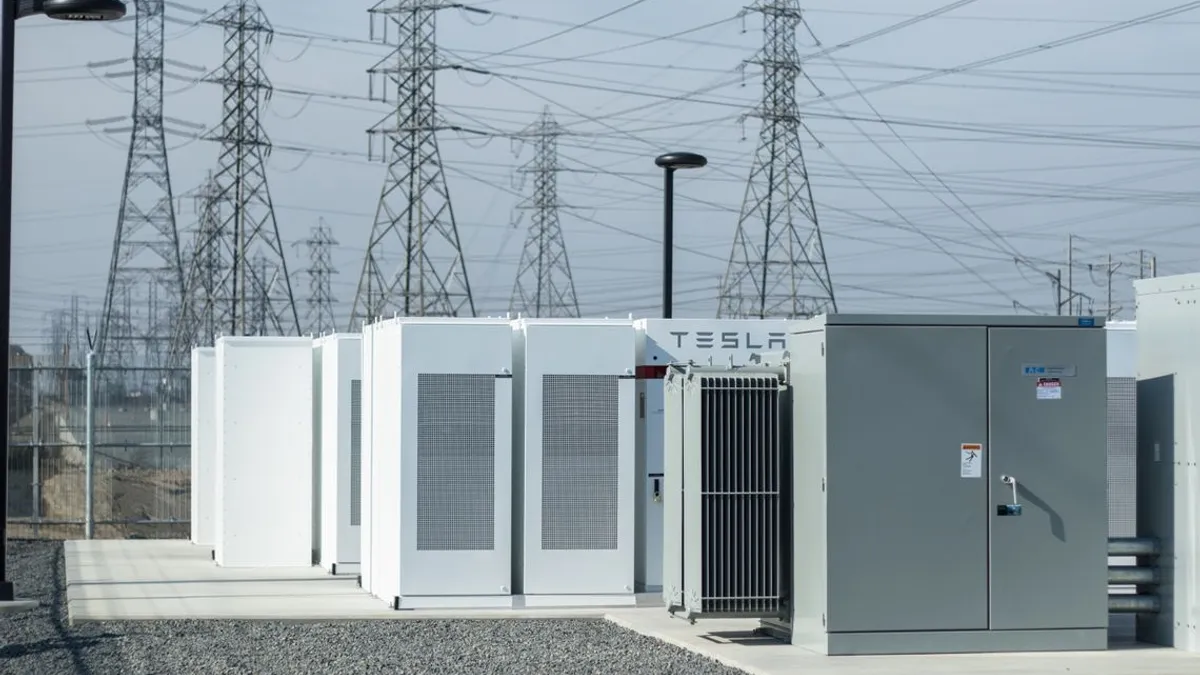Dive Brief:
-
The U.S. energy storage market set a growth record in Q1 of this year, deploying 148.8 MW, a 232% increase from Q1 2018, and a 6% jump from Q4 2018, according to the latest Wood Mackenzie U.S. Energy Storage Monitor.
-
Behind-the-meter storage made up 46% of Q1 2019 deployments, representing a 138% growth from Q1 last year and a 36% increase from the fourth quarter of 2018. Meanwhile, front-of-the-meter deployments dropped 10% from last quarter, but still quintupled their growth from Q1 last year.
-
California led in residential and non-residential storage market growth, but New Jersey, Arizona and Massachusetts dominated front-of-the-meter capacity. Deployments are expected to surpass 4.5 GW by 2024, largely driven by utility procurement and growing awareness of the technology's benefits to the grid, according to WoodMac.
Dive Insight:
Analysts predicted at the end of 2018 that utility solicitations of storage as well as state legislative targets would drive the resource's growth in 2019.
As the economics of storage and renewables improve, more utilities are including those pairings in their integrated resource plans and more state legislatures are looking at how to best incentivize battery storage.
Looking at Q2 2019, the report notes progress has largely been made through utility efforts to include the resource, on its own and paired with renewables.
In Q2, Southern California Edison announced seven contracts for 195 MW of energy storage, Green Mountain Power's 2018 integrated resource plan included a goal of adding 50 MW to 100 MW of storage in the next decade and Florida Power and Light announced a 409 MW solar-plus-storage project.
Meanwhile, utilities such as Oklahoma Municipal Power Authority, Hawaiian Electric Company and the Tennessee Valley Authority are either actively seeking storage solicitations or have included it as an option for bidders.
But as the market continues to grow, anticipated to reach $4.8 billion in value by 2024, state lawmakers and regulators are also making it a priority in energy policy:
| State | Policy action in Q2 2019 |
|---|---|
| Washington | The state's legislature passed a bill in April that calls for utilities, in their planning processes, to follow a number of guidelines to better prepare for a more distributed grid. |
| Texas | A bill in the state's legislature would allow for distribution utilities to enter into third party contracts for storage with a 40 MW cap per utility. |
| Minnesota | Energy storage bills passed in the state would require utilities to consider battery storage as a resource in their future IRPs, direct the Minnesota Department of Commerce to conduct a cost-benefit analysis on the value of storage to the grid and help utilities recover costs from pilot projects related to storage. |
| Colorado | The Sunset Public Utilities Commission bill, signed by Gov. Jared Polis, D, directs the PUC to study the value of adding distributed resources to the grid, including battery storage. |
| New Hampshire | An introduced bill would establish a storage capacity target to reduce peak demand 2% below 2018 levels. |
| Maryland | The state passed an energy storage pilot program, which requires Maryland's four investor-owned utilities to solicit two energy storage projects each. |
| Arkansas | The state's Public Service Commission filed comments on aggregating distributed energy resources in the wholesale market. |
| New York | The New York State Energy Research and Development Authority allocated $280 million for energy storage projects under its Market Acceleration Bridge Incentive Program. |
Two congressional bills were introduced in Q2 that would expand investment tax credit eligibility to standalone storage facilities and the Trump administration's fiscal year 2020 budget proposed two initiatives that would allocate $163 million toward research and development on the resource.















